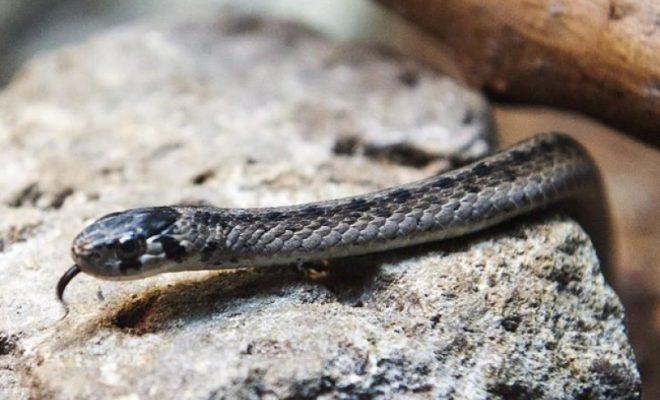Ecomuseum Zoo Makes Efforts to Save Montreal’s Brown Snake

Small brown snakes found almost exclusively in the Montreal area, are becoming increasingly rare these days as they fight for survival amidst Montreal’s rapidly disappearing natural snake habitats. Based on this, the Ecomuseum zoo has intensified efforts to protect the little reptile.
The zoo just recently completed phase I of a project to protect the habitat of the small brown snakes also known as Quebec’s “most urban” reptile. The project involved the building of two hibernation sites and 39 snake shelters in three Montreal nature parks — Bois-de-l’Île-Bizard, Bois-de-Liesse and Pointe-aux-Prairies — where brown snake populations have already been found. Workers used over 128 metric tons of blasted stone to build shelters which offer the snakes the kind of habitat that is quickly vanishing from Montreal’s landscape.
Speaking to Montreal Gazette, David Rodrigue, executive director of Ecomuseum Zoo in Ste-Anne-de-Bellevue, said large portions of the snake’s natural habitat have been encroached upon by residential development and other human infrastructure. He also said the brown snakes, which grow only 25 to 35 cm in length are quite harmless to humans.
“It’s a small species. They don’t move a lot. They’re very localized. That explains why it survived for so long in such an urban environment . . . but gradually they’re just being taken out one by one. And we’re actually looking at a species that maybe not so far in the future will not be here anymore.
“It’s sad to say in a sense. On the other side, we can intervene now. And there are ways to turn around the trend.”
Even though many people are not natural snake lovers, snakes are a natural part of the earth’s ecosystem. It feeds on earthworms, slugs and snails while American crows, robins, weasels and raccoons feed on them.
“It’s not like a Panda bear or an elephant,” Rodrigue said while explaining how it is a bit difficult to get people to join the campaign to save the snakes. “With snakes, people don’t relate to them, so it’s always one of the hardest things to explain.”
“Nowadays, I think we can all understand we depend on the ecosystem. We’re not apart from it, but what a lot of people don’t understand is, if tomorrow morning there are no browner snakes in Quebec, nobody is going to care. Or very few. And it probably won’t have an immediate effect on the ecosystem,” Rodrigue said, according to the report.
“Then the year after there will be no more American kestrels and it might not have an impact then. The year after another species disappears. At some point, though, there is a breaking point.
“Imagine a castle made out of cards or those old Jenga games where you can pull a piece out and it holds. But at some point, you pull one out and the whole thing collapses,” he said. “People look at a little snake and say it doesn’t really matter. Individually, it’s true. But at some point, too much is too much, and it will really start impacting us.”
The project got $48,600 of financial support from the Foundation Hydro-Québec pour l’environnement.








